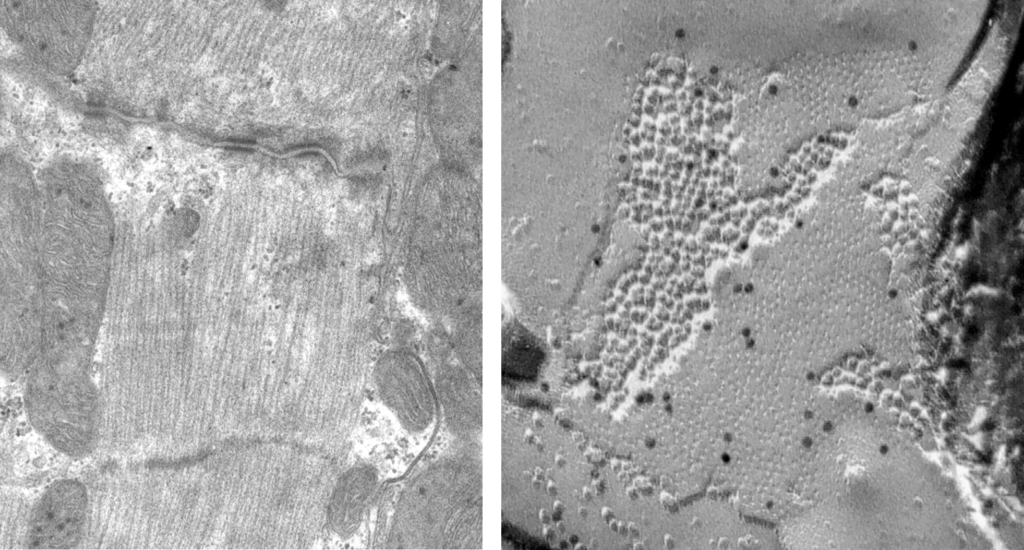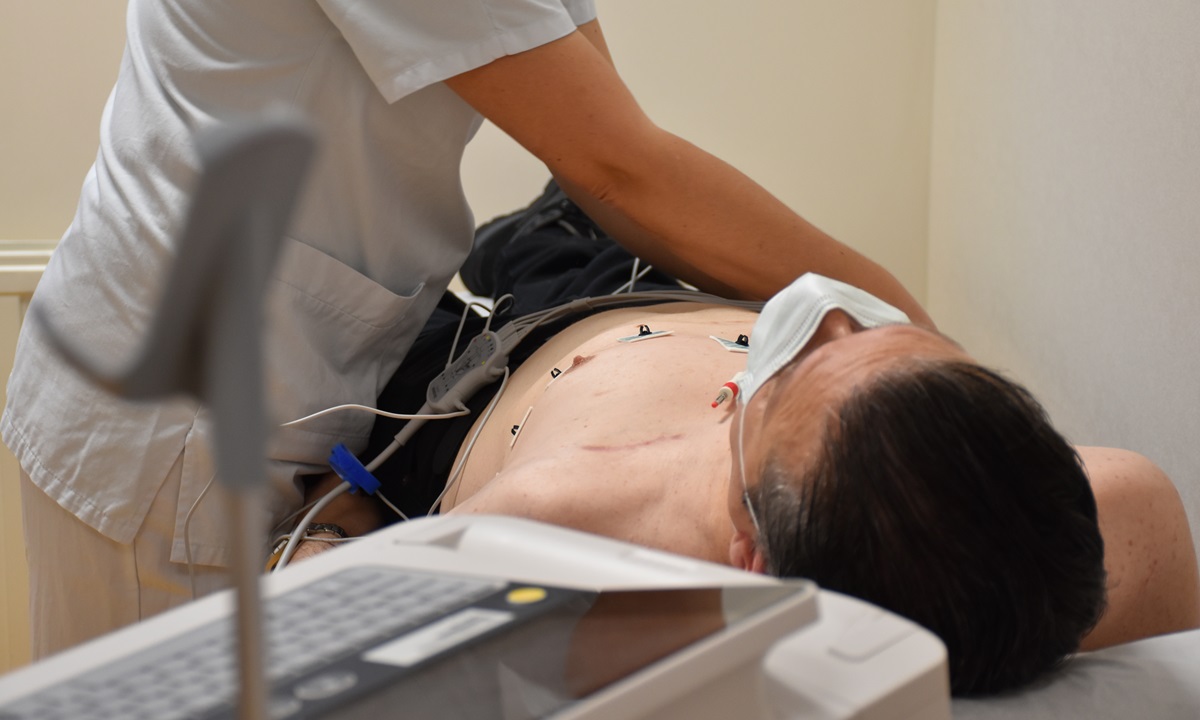Epidemiology of cardiac rhythm disorders
The 2 forms of cardiac rhythm disorders
Familial forms: rare, with the most common having a prevalence of 1/2500-5000 births
Acquired forms: very common, particularly atrial fibrillation, which affects 1.5-2% of the population and more than 12% of the over-80s.
Number of deaths
Leading cause of sudden death , particularly before the age of 35
A major cause of decompensation of heart disease, i.e. heart failure, which is one of the leading causes of death in Europe.
Male/female breakdown
Overall, women are affected as much as men, although for some rhythm disorders there may be a gender effect.
Symptoms / severity
Most often, rhythm disorders are responsible for a sensation of abnormal heartbeat, palpitation, irregular heartbeat, or “misfiring”. But they can be asymptomatic, diagnosed during an electrocardiogram recording or after a fainting spell, a bout of heart failure or, sometimes, sudden death.
Extrasystoles, premature heartbeats that feel like misfiring, which may be atrial or ventricular, are usually benign and fairly commonplace; but they may herald the onset of a more serious rhythm disorder, and this is one of the circumstances in which the risk of a rhythm disorder should be investigated.
Causes / risk factors
The main risk factor for rhythm disorders is the presence of heart disease, linked for example to a myocardial infarction, valvular heart disease or the effects of arterial hypertension. In this case, there is a change in the heart muscle, the myocardium, notably with the appearance of fibrosis (replacement of the muscle by inert support tissue) which alters the heart’s electrical activity and encourages the onset of a rhythm disorder.
Other causes of rhythm disorders are genetic abnormalities. These range from rare mutations affecting one gene, as in familial long QT syndrome, to frequent mutations, known as polymorphisms, certain combinations of which create a favourable environment for the onset of a rhythm disorder, now known as polygenic risk factors.
Course / consequences
Rhythm disorders can develop in a paroxysmal mode with acute episodes, or, as in the case of atrial fibrillation, towards a persistent then permanent form.
In addition to the acute complications associated with paroxysmal episodes, such as sudden death syncope, the repetition or persistence of episodes of rhythm disorders results in the heart pump not working as well as it should, with a risk of developing heart failure.
A major complication of the most common rhythm disorder, atrial fibrillation, is arterial embolic stroke, particularly cerebral embolic stroke.
How is it treated?
there are 3 main types of treatment:
- Medication: anti-arrhythmic drugs that target the proteins responsible for the heart’s electrical activity. Beta blockers, which inhibit the effects of adrenaline on the heart, are now the leading treatment for rhythm disorders.
- Ablation of the arrhythmogenic zone using probes introduced into the heart via a venous or arterial route under local anaesthetic
- Implantation of a pacemaker-defibrillator to prevent sudden death
Is there any research into this condition?
This is one of the most active areas of cardiovascular research , from the molecular basis of cardiac excitability and rhythm disorders, including gene identification, to the development of new imaging ablation probes for arrhythmogenic zones.
It is also one of the most active sectors in telemedicine.

ICAN’s response
The ICAN IHU teams are major players in this field.
- They are international leaders in atrial fibrillation research and coordinate a vast European network in this field. Their work has also contributed to a better understanding of the cellular and molecular bases of cardiac excitability.
- They have contributed to a better understanding of familial forms of rhythm disorders, in particular the description of aryhtmogenic dysplasia, and to the discovery of new genes (long QT, dysplasia, Brugada).
- The Heart Institute is one of the leading centres in France, and the first in Paris, for the treatment of these rhythm disorders, and a reference centre for familial forms.








